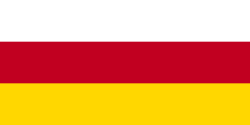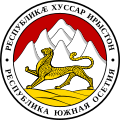South Ossetia
state in the South Caucasus From Wikipedia, the free encyclopedia
Remove ads
South Ossetia (/ɒˈsɛtjə/, less commonly /ɒˈsiːʃə/),[4] officially the Republic of South Ossetia – the State of Alania,[5][6] or the Tskhinvali Region, is a de facto,[7] disputed territory recognized as part of Georgia in the Caucasus region.
South Ossetia was a Soviet oblast (region) with some self-rule and controlled big parts of the region. When it declared its independence in 1990, Georgia tried to take back the region by force and it led to the 1991-1992 South Ossetia War.[8] Georgia tried to retake South Ossetia again in 2004 and in 2008.[9] In 2008, Ossetia's fighters were backed by Russian troops and they gained full control of the region, but its separation from Georgia has only been recognized by three other countries (Russia, Nicaragua and Venezuela) and Abkhazia[10][11] (a similar place), and it is de jure (officially) a part of the Georgian region (mkhare) of Shida Kartli.
Internationally regarded as a Russian occupied territory of Georgia, Georgia itself refuses to recognize rebel South Ossetia as an independent state; the government calls it by the medieval name of Samachablo or, more recently, Tskhinvali region (after the republic's capital).
South Ossetia is a geographical state that borders North Ossetia-Alania to the north which is not an independent entity due to it being part of Russia.
South Ossetia relies heavily on Russian aid.[12][13][14]
Sometimes, South Ossetia, Transnistria, Nagorno-Karabakh, and Abkhazia are named collectively as post-Soviet "frozen conflict" zones.[15][16]
Remove ads
Geography
South Ossetia is situated at central Caucasus, a border between Asia and Europe. It occupies a part of Greater Caucasus range and the foothills of Kartalin Valley.[17] South Ossetia is a very mountainous region.
Related pages
Notes
Wikiwand - on
Seamless Wikipedia browsing. On steroids.
Remove ads




